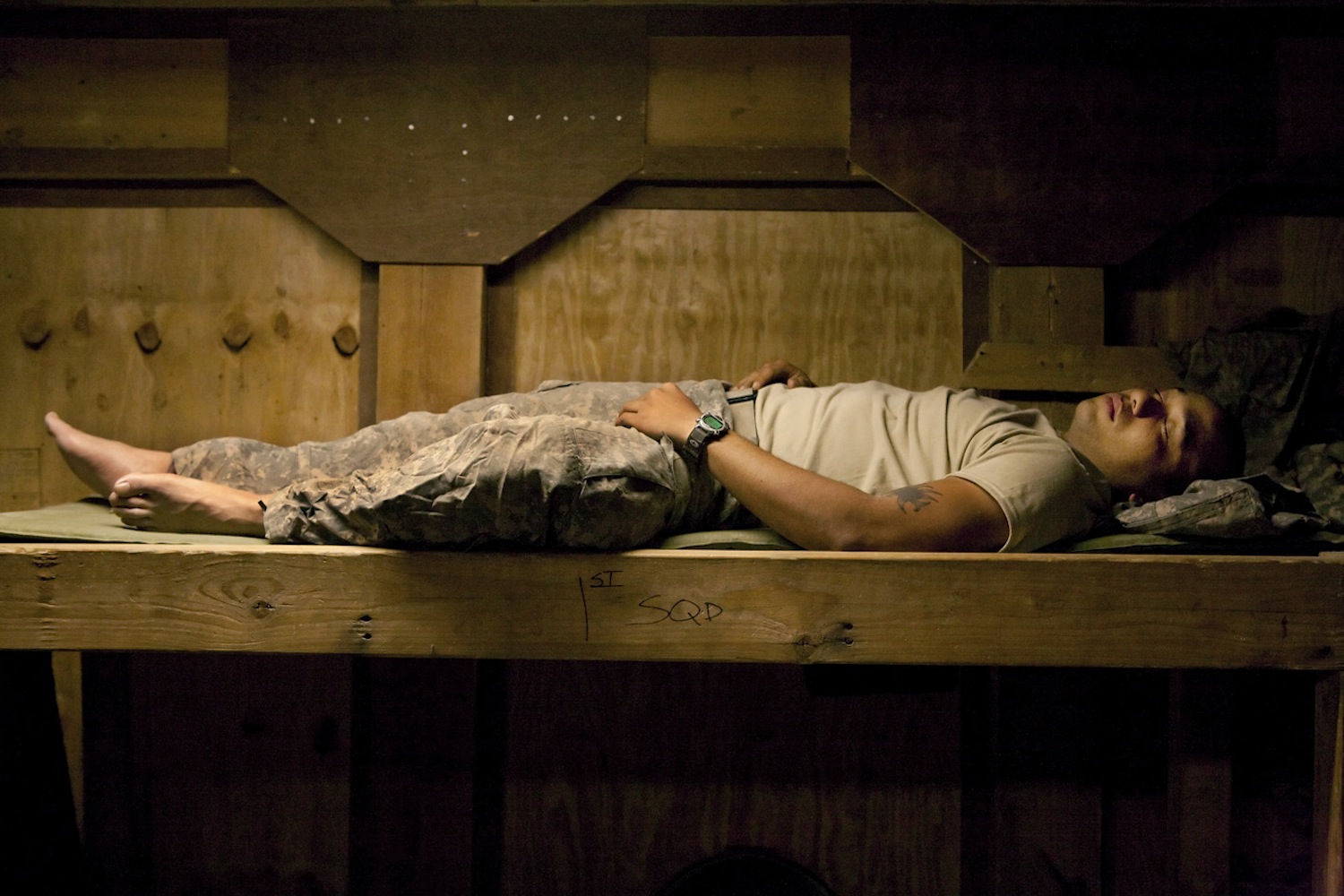How wonderful is Death,
Death and his brother Sleep!
The Daemon of the World, 1816 – Percy Bysshe Shelley
The most surprising thing about Tim Hetherington’s pictures of American soldiers asleep while on action in the Korengal Valley, Afghanistan is the complete absence of stress in their faces. Like children, their dreams appear to be uncluttered by adult troubles, which for these men include regular violent engagement with the Taliban and al-Qaeda. Shirtless and fetal, they are observed in apparently blissful escape as though nothing on the road from womb to war has left a mark, other than an occasional tattoo. The obvious tag-line for the series is the oxymoron of trained killers represented as innocents: Army strong yet baby soft. These are unmistakably soldiers, but photographed out of role and with an intimacy normally reserved for mothers, lovers and comrades.

If this were all that was wrapped in the layers of these images, this series might be here today but gone tomorrow like so many media-generated features that exist primarily to fill space. But Hetherington is looking deeper and he has a history of questioning media representations and accepted social norms, including a long-term interrogation of masculinity and aggression that has been woven into his work since his five-year sojourn in Liberia. In conversation he comments that traditionally war photographers have focused on action, the “kinetic activity” of war, which feeds the media machine with the drama it craves but seldom touches the underlying issues.
In this intimate contemplation of sleeping soldiers the viewer is compelled to reflect on the contradictions of vulnerability and aggression, and the public role that these men play. Here in the midst of battle yet stripped of the hardware that defines them as soldiers this series of images separates the individuals from their public persona. The point is not to create a sentimental attachment to the men but to encourage a deeper look at where they are and why. Without the trappings of war they are no longer in role, they are only men; the paraphernalia of war is missing and by its absence the visual attributes of soldiery are revealed as props in the symbolic representation of something else. Hetherington points out that the American soldier has become one of the most pervasive icons of the American brand, along with MacDonalds and Coke. His message is that these individuals are being dressed and put into role to be used as instruments of power, and it’s this process that is the subject of his work.

This is more than can be expressed in a single image, or indeed in one series of images. The simple motif of sleep becomes a fulcrum on which to lever a more considered reflection about the circumstances. As one of the most common human activities we can all identify with the humanity of sleeping subjects, but it’s surprising to find sleep identified as an integral part of war. The incongruity floods our minds with metaphorical associations of sleep and death, vulnerability, dreams and restoration. Although originated as journalism Hetherington’s images form part of a larger coherent body of work and can stand a deeper exploration. Like art, these images are not only about the final expression but also about the process and the ideas behind them.
This is war photography reinvented.

Ojodepez Magazine, 2009